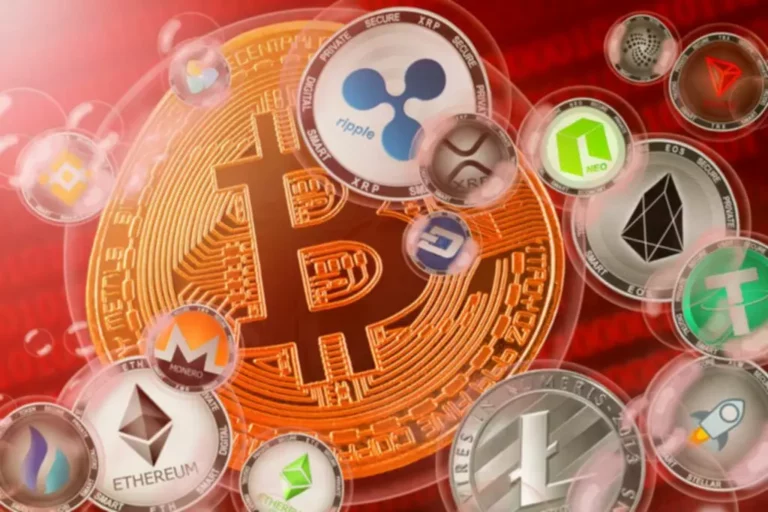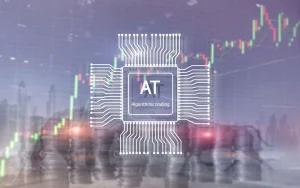Liquidity means how an asset can be bought or sold at a stable price in a particular market. If you can sell or purchase at any time and in any amount without affecting the market price, the market is said to be liquid. The more the price changes when buying or selling a lot, the less liquid the market is considered.
Crypto Liquidity Meaning
Let’ study in details, what is crypto liquidity. In cryptocurrencies, liquidity is a coin’s ability to be easily converted into cash or other currencies.
Liquidity is essential for all tradable assets, including cryptocurrencies. A low level of liquidity means that the market is volatile, causing cryptocurrency price spikes. A high level means there is a stable market with minor price fluctuations.
It is easy to buy or sell cryptocurrencies in a liquid market as buy or sell orders will be filled faster due to more market participants. It is possible to start or end trading on a given cryptocurrency market.


Turnkey Brokerage Solution For Your Business
Get the most profitable fully licensed fx/crypto brokerage software or ready-to-operate business in 48 hours. Best-in-class web & mobile trading platforms, sales-driven CRM, full integration with MT4/5, and 150+ payment providers.
Crypto Liquidity Importance
High liquidity in the market is ideal as it encourages higher prices for all stakeholders due to the many traders in the market. A busy market with a high level of trading activity creates an equilibrium market price that is acceptable to everyone.
High liquidity ensures prices are stable and not subject to significant fluctuations due to large transactions that can affect cryptocurrency prices while increasing volatility and risks for the market. In a liquid market, prices are stable to handle large orders due to many market participants and their orders.
Exchange Liquidity vs. Cryptocurrency Liquidity
The difference between exchange and cryptocurrency liquidity is with what is measured. From an exchange perspective, you measure the amount of a particular crypto asset that you can sell on that exchange without significant slippage. When measuring the liquidity of a specific cryptocurrency, you will want to consider all the different ways in which that cryptocurrency can be turned into cash or other assets.
When measuring cryptocurrency liquidity, you need to look at the order books of all the exchanges where the asset can be traded and other variables such as acceptance of the crypto asset through payment processors.
Stock Market Liquidity vs. Crypto Exchange Liquidity
There is no significant difference between how liquidity works in the stock market or a cryptocurrency exchange. In both cases, the same basic principles apply.
There is a difference between how liquidity works for stocks and cryptocurrencies. The liquidity of a share is centralized on one exchange. In cryptocurrencies, liquidity is distributed across multiple conversations. Network effects push most traders towards the same few exchanges.
Liquidity vs. Volume
Liquidity is equated with volume, but they are two different things. There is usually a strong interconnection between liquidity and volume. However, the high volume does not mean high liquidity.
Trading volume is simply a measure of the value of completed trades over a while, usually measured daily. On the other hand, liquidity is connected to buying and selling orders currently on the order books. Volume measures the trades that have already taken place. Liquidity informs about the offers to buy and sell that can now be accepted on the exchange.
More Trading Volume = More Liquidity
There is not necessarily a direct relationship between trading volume and liquidity; however, an exchange with high trading volumes will attract more traders. When it comes to crypto exchanges, extreme network effects come into play because everyone wants to be on the sale with the most liquid markets (due to the high activity level).
High trading volumes can attract new traders to the cryptocurrency exchange, which will lead to a constant increase in the number of buy and sell orders, which means a higher level of liquidity. This has a combined effect, as higher volumes and more users usually mean that the exchange can offer better fees and rates, only increasing their value compared to other deals.

Cryptocurrency liquidity as a measure of confidence
The cryptocurrencies liquidity is undoubtedly a critical parameter that you should pay attention to when developing a trading strategy. The greater you are willing to open a position, the more critical the liquidity of the asset.
The liquid cryptocurrency market can be entered or exited without affecting the price too much.
Imagine buying $10,000 on Binance of a top 500 altcoin while having a daily trading volume of $20,000. At best, unless you want to push the price up and face massive slippage, you will have to accumulate your position for a week or even several weeks. Illiquid assets are often the subject of speculation and pump-and-dump schemes. It is easier for pumpers to influence the price of an illiquid asset by buying or selling a large part of the daily volume of this asset. If an asset has low crypto liquidity, this “big chunk” of daily volume will cost buyers less money and significantly increase value.
Why is Liquidity Significant?
Some crypto assets have much better liquidity than others. It is simply a by-product of higher trading volume and market efficiency.
In some markets, the trading volume will be several thousand dollars a day, while in others, it will be in the billions. Liquidity is not an issue for Bitcoin or Ethereum, but other coins are affected by a significant lack of liquidity.
This is important when it comes to altcoin trading. If you create a position on an illiquid coin, you will not be able to exit at the desired price. This is why it is usually better to trade assets with higher liquidity.
Liquidity can also fluctuate greatly depending on the market. A financial crisis can significantly impact liquidity as market participants rush to leave to cover the financial obligations or short-term liabilities.
Choosing Liquidity Provider
To find the best liquidity provider, brokers must evaluate their own specific needs and consider several factors:
- OffersFirst, the broker should look at the overall package offered regarding what assets and the type of liquidity provided. The provider must provide multi-asset liquidity and access to the FIX protocol and historical data. In addition, a multi-currency account should be chosen and the ability to accept all significant stable coins and cryptocurrencies for deposits and withdrawals.
- Market depthMarket depth is another crucial factor. The greater the number of buy and sell orders at each price, the higher the market depth. This gives an idea of the liquidity and depth of a particular currency.
- Quick executionsThe provider must be able to offer fast execution of trades with re-quotes or slippage, especially during important market news.
- PricesThe provider’s price offer should include competitive spreads, low commissions, and swaps with no compromises.
- Data feedsThe provider must be able to offer stable and reliable data streams to clients. Price should reflect real-time prices from all relevant exchanges and the interbank forex market. Any delay in providing price data may result in gaps.
- AuthenticityProviders should be regulated like brokers to ensure that they operate under industry best practices and that the provider supports the underlying broker.
- Reporting requirementsThe provider must be able to provide an automated and reliable reporting system to comply with regulatory requirements. Typical reports include trading reports, FIX bridge reports, swap and rollover reports, and order book access.
- SoftwareThe provider must be able to implement the FIX protocol and other APIs, MT4/MT5 bridging, and FIX bridges.
Factors Affecting Crypto Liquidity
- Trading volumeMost people who own cryptocurrencies invest and trade coins to increase their value rather than use them as an exchange medium. It is the most critical factor affecting liquidity in the cryptocurrency market. The number of coins moved on exchanges in the last 24 hours is volume. In essence, the book reflects the market activity of the coin; higher volume means more people are buying and selling currencies.
- Cryptocurrency exchange platformAn exchange is a trading platform where buyers and sellers can freely buy, sell and exchange assets. Since there are more ways for people to get their hands on crypto, the more crypto exchanges there are, the more market (and trading) activity there is. Market liquidity is increased by increasing the frequency and volume of transactions. More than 200 cryptocurrency exchanges, 21 decentralized exchanges, and several peer-to-peer (P2P) platforms are available today. Many other deals are currently under development and will be launched soon.
- AcceptanceBitcoin and other cryptocurrencies quickly gain popularity and acceptance as payment methods, especially in online stores. The success of currency depends on mass adoption or at least a vast network of people who can use it. As a result, stores and organizations must accept cryptocurrencies as a form of payment to increase usability and utility as a viable medium of transactions. At the moment, more than 370,000 merchants in 182 countries accept cryptocurrency payments, including industry giants such as Amazon, IBM, and Microsoft.
- Law regulationsThe law regulations in different countries can affect the liquidity of a cryptocurrency. Some governments prohibit trading cryptocurrencies or the use of cryptocurrencies in business transactions. This reduces liquidity as the ban on cryptocurrencies entails restricting their exchange, making it difficult for users to buy or sell digital assets. Anyone interested in purchasing bitcoin will need to find a provider privately or use peer-to-peer channels. Since fewer vendors are to serve, this usually results in higher prices. As a result, the liquidity will be extremely low.
Conclusion
Liquidity is an essential factor when considering financial markets. It is generally desirable to trade high liquidity markets as you will be able to enter and exit positions with relative ease.






